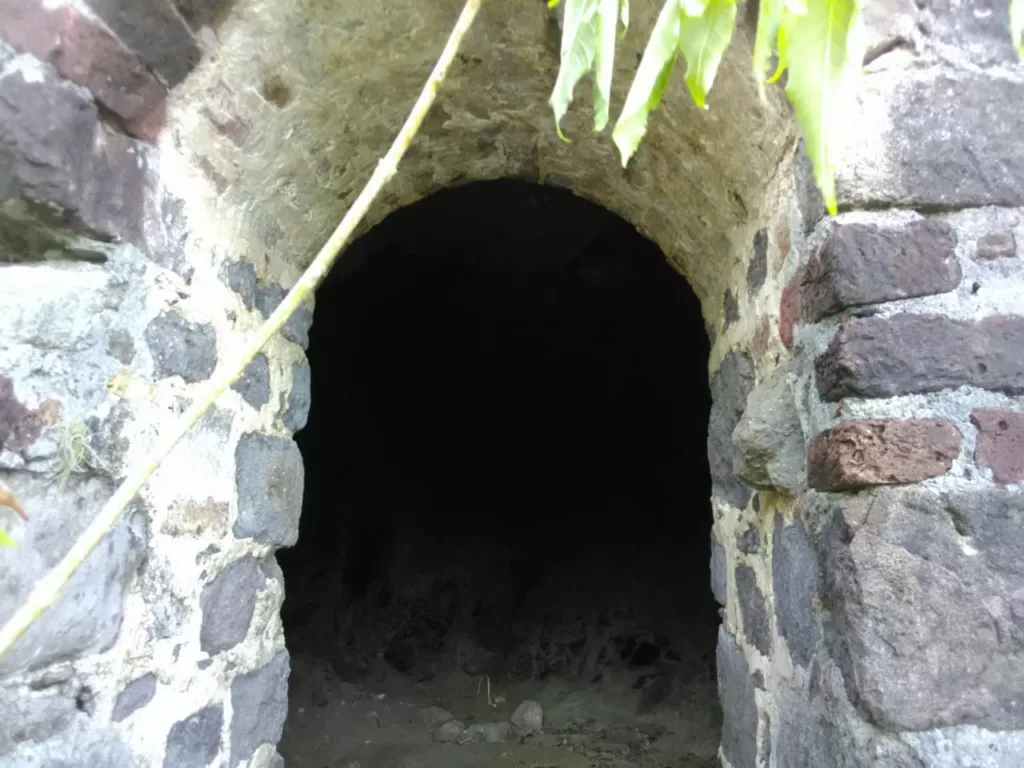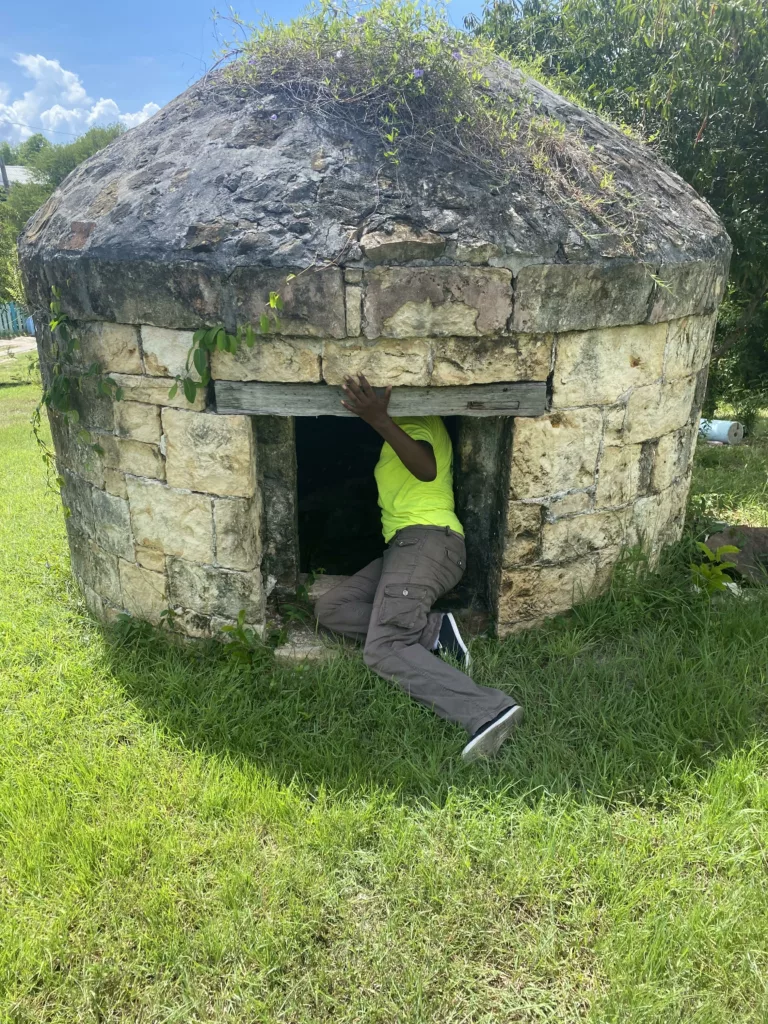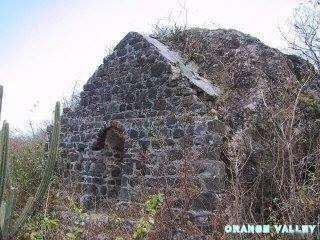
CREATIVE SPACE is an award-winning column spotlighting Antigua-Barbuda and Caribbean art and culture.
It is written by Joanne C
Hillhouse. Read the extended edition with extras at
https://jhohadli.wordpress.com/creative-space. Watch full
interviews and extras in the CREATIVE SPACE
playlist at https://www.youtube.com/@jhohadli
Google historical landmarks in Antigua and Barbuda and it will spit out various fortifications (World Heritage site Nelson’s Dockyard alongside Monk’s Hill, Shirley Heights, the Blockhouse, and the Dow’s Hill Interpretation Centre; the forts – James, Berkeley, Barrington), any number of well-preserved churches (St John’s Cathedral, St Barnabas, St Peter’s etc.), and the many sugar mills dotting the landscape; all reminders of British occupation during the colonial/plantation era. There is a largely overlooked symbol of this era though – two of them; one I’ve visited and written about in the past, and one I visited for the first time this past week.
“Between the village[s] of Willikies and Seatons was the famous Parson Maules Estate” – p 106 – 107, To Shoot Hard Labour: The Life and Times of Samuel Smith, an Antiguan workingman 1877-1982 by Keithlyn and Fernando Smith – “the slaves saw living hell for the Parson Maules bakkra have two dungeons, the Torturer and Bump-off. The Bump-off dungeon was blown down by the hurricane of 1871, but the one they used to call the Torturer is still there.”

It’s still there.
I visited it this past week. It’s hard to see its solidly-rounded, tightly-packed stone and peer into its depths via the single opening and not feel the weight of history. Such a picturesque image it makes on a rising in a well-tended residential area, and yet the horror it held is never far from the mind.
“In the Torturer, the massa would control the amount of air and light. How much you suffer depend on how tight he plug the draft and the time you have to stay in there. Some people would die in there.”
Slave dungeons were used to punish enslaved Africans for any number of infractions – such as not producing enough. They were pitch black when closed and those entombed within kept company in the dark with rats and insects.
I only looked into the Torturer which is below ground level, but I’ve climbed up in to the other remaining dungeon, a cave cut into a rock, where it is said an enslaved woman gave birth only to have her baby eaten by rats. This other dungeon is in the area across from Ffryes Beach known as Orange Valley Estate.
Per the Museum of Antigua and Barbuda, the slave dungeon “at Orange Valley … [is] known as the ‘Rock Dungeon’. A planter of the 20th century once said they gave more production and suicide amongst the slaves.”

Our island was once a prison for people that look like the majority of us; these two dungeons are only a glimpse of that. Are you aware, for instance, of the barracoon at the bottom of Nevis Street in the vicinity of Redcliffe Quay? With laws defining the status of Black people on island, who were penned in by the sea (a reality those illegally putting up fences on our beaches seem determined to reference), there was nowhere here where they were fully free. Like did you know there was once a cage on Market Street near the Court House, now the Museum, where runaways were held for collection by their ‘owners’? If you read CREATIVE SPACE #10 OF 2023 – MORE THINGS I DIDN’T LEARN IN HISTORY CLASS in May 2023, you would have been reminded that even Emancipation was conditional.
There are landmarks related to history all over the island. For example, as you drive along Freemansville Road, the baobab tree – significant as it bore witness to King Court an’ dem plotting “death to our foes” as they inhaled the smoke of roasting cashews, toasted their king, and received the advice of obeah woman Morah in Stony Hill Gully – also the site of an old slave market – in 1736. It was recognised as a historic site by Governor Strickland in 1904.
Do we today hold such places in memory with the reverence we have for venerated British spaces (the Google-friendly historical landmarks)? Are we mindful that we honour our ancestors and our future by remembering? Another question, as sparked by debates about the repurposing of Great Houses, Plantations, Sugar Mills, etc, how do we remember respectfully?


